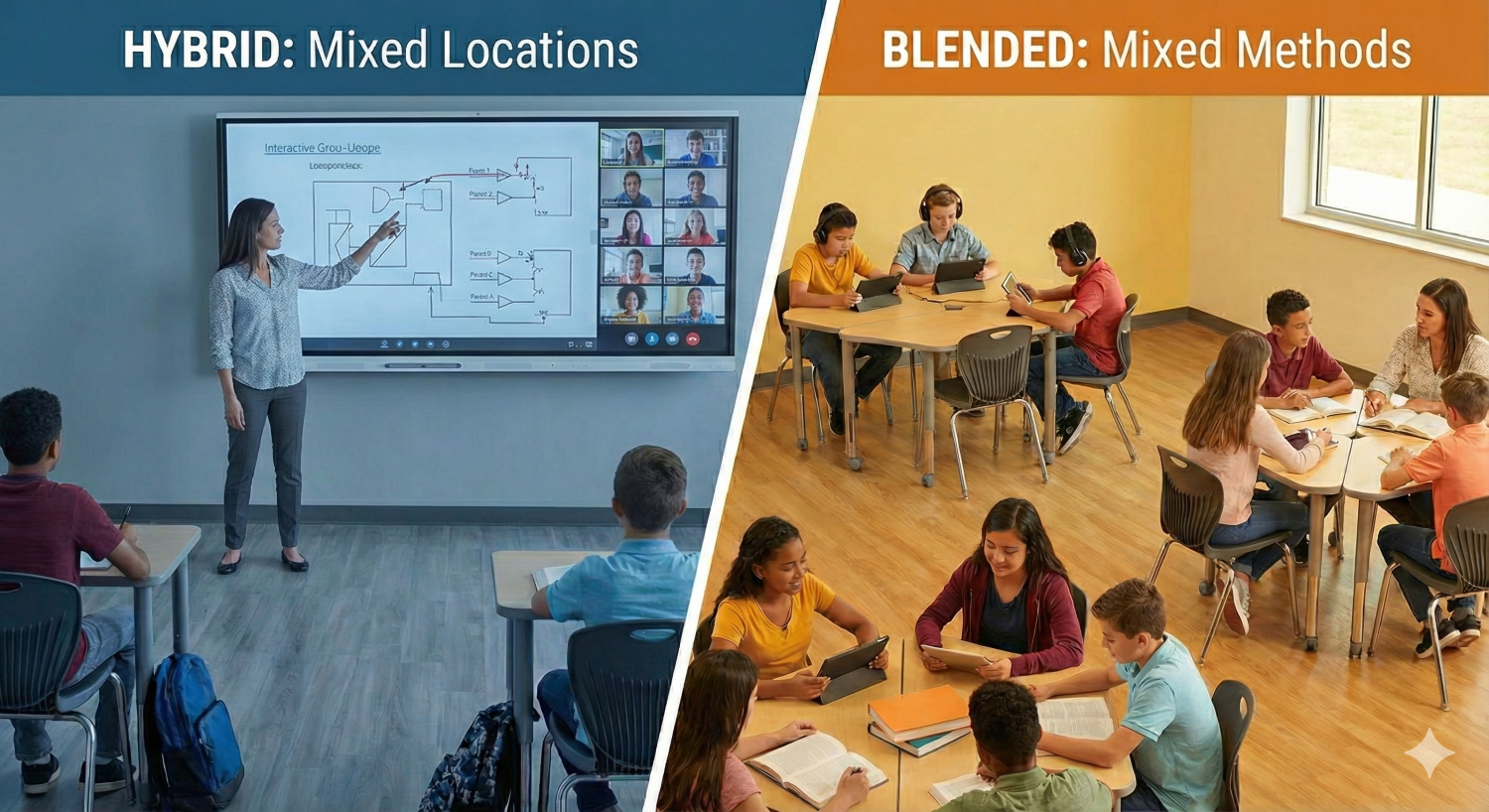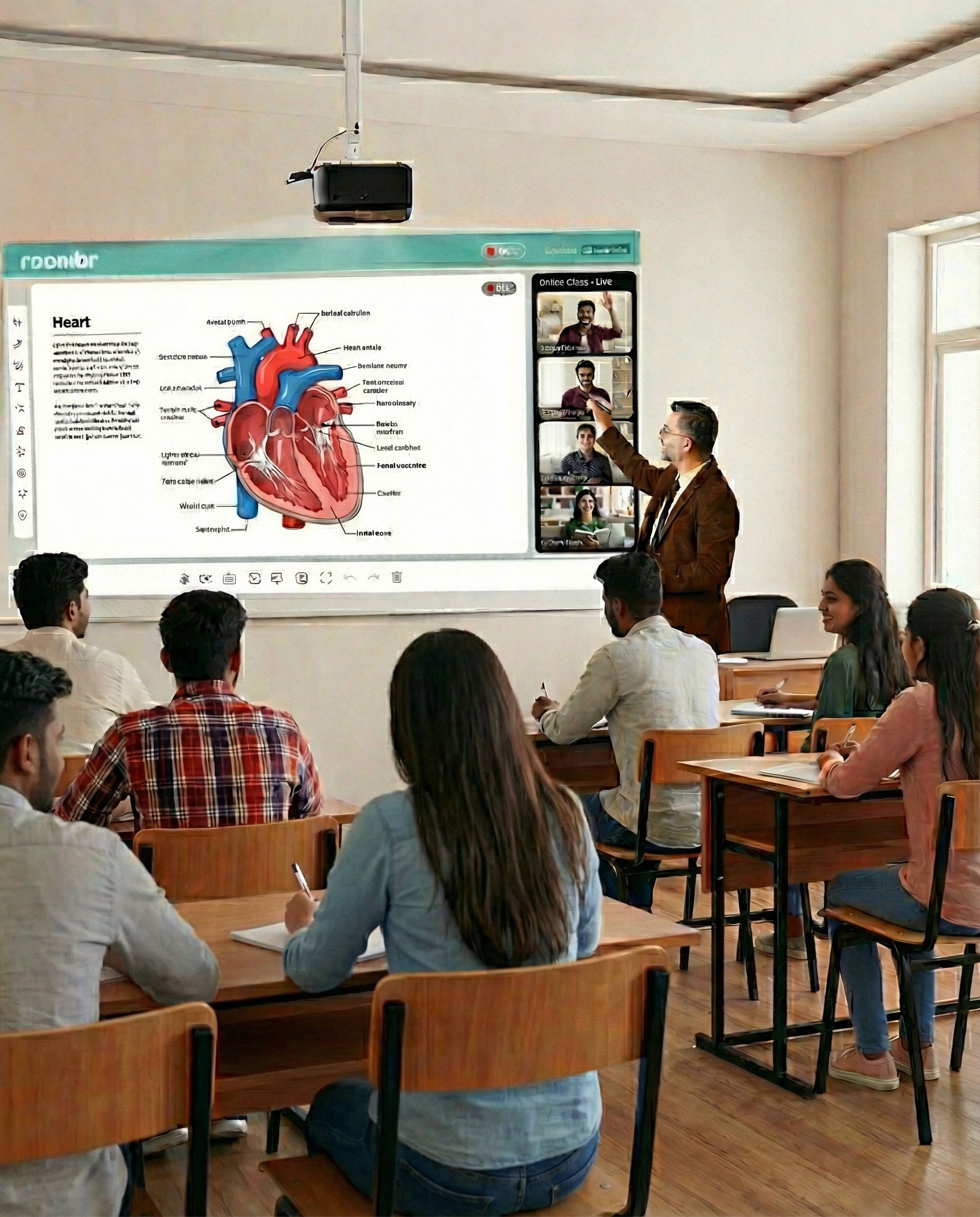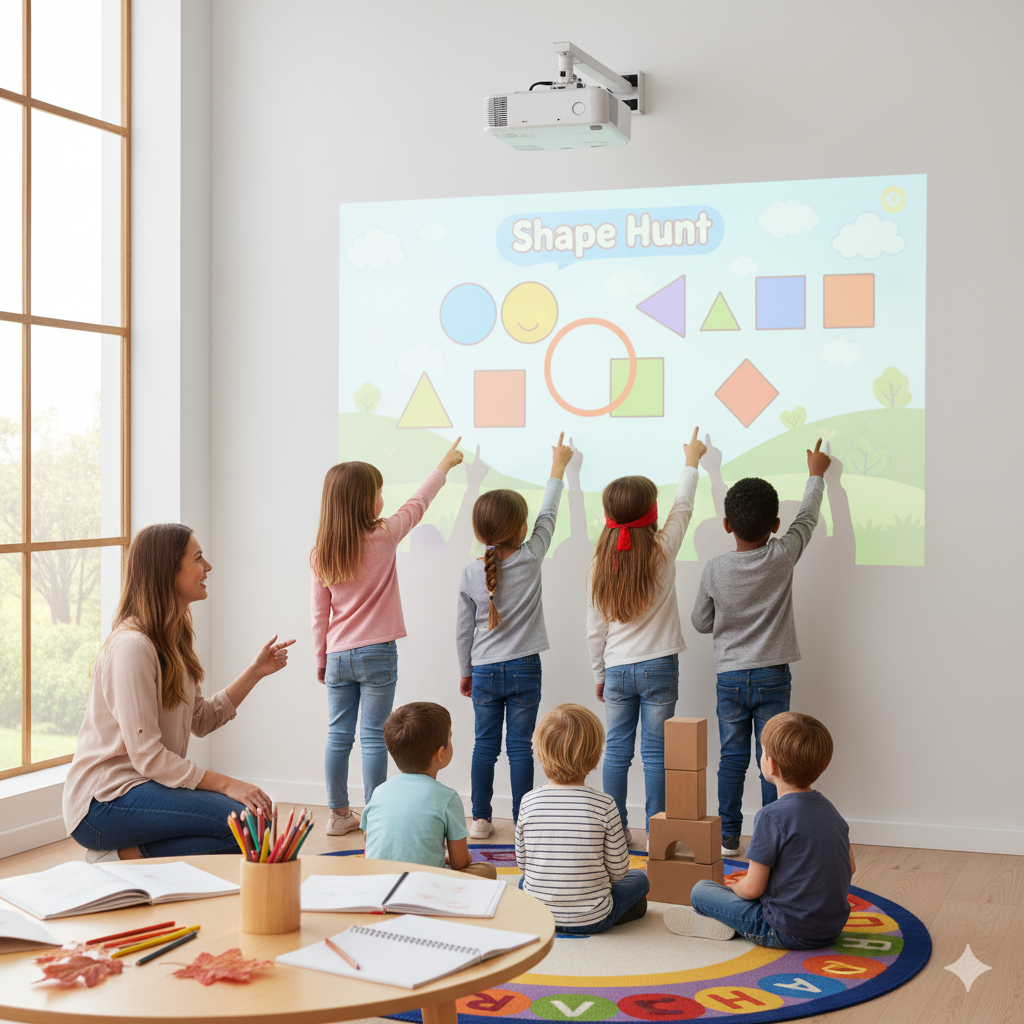How to Build a Low-Cost Digital Classroom for Remedial Learning in Rural India

In 2024, the Annual Status of Education Report (ASER) revealed that over 50% of rural students in Grade 5 cannot read a Grade 2-level text. The report also highlights that this gap continues as the students grow older.
This is where remedial teaching becomes essential. Without structured remedial programs, students who fall behind in early grades are unlikely to ever catch up. For rural students, the challenges multiply. Multi-grade classrooms, untrained teachers, limited resources, and minimal support at home leave little room for one-on-one help.
Yet, amid all these constraints, digital classrooms offer a unique opportunity. If planned effectively, they can deliver scalable, low-cost remedial learning, even in the most underserved settings.
This guide explores how rural schools can set up low-cost digital classrooms tailored for remedial teaching.
Remedial Teaching in Rural Indian Context

Remedial teaching refers to targeted instruction provided to students who are lagging behind their grade-level expectations. It’s not a re-teach of the curriculum. It’s a way to close skill gaps and bring students to a level where they can meaningfully engage with ongoing lessons.
In rural India, these gaps often begin early. The reasons are not difficult to trace:
- Multi-grade classrooms: One teacher may handle Classes 1–4 together, leaving little time for personalized attention.
- Lack of subject-specific educators: Especially in middle and high schools, a single teacher may be teaching science, maths, and English across levels.
- First-generation learners: Many students are the first in their families to attend school. They lack support at home for homework, reading, or concept revision.
- Limited learning time: Children often juggle school with household work, farming duties, or caring for younger siblings.
- Shortage of learning materials: Even basic textbooks are shared among students in some villages. Access to workbooks, assessments, or audio-visual content is limited.
To address this, the National Education Policy (NEP) 2020 and NIPUN Bharat Mission have made Foundational Literacy and Numeracy (FLN) their top priority. But policies need tools. And that’s where digital classroom models, when designed with rural constraints in mind, can create real change.
What Makes Digital Classrooms Ideal for Rural Remedial Learning
Digital classrooms aren’t just for urban, tech-savvy schools with smartboards and Wi-Fi. In fact, rural schools may benefit even more if the digital tools are simplified, affordable, and designed for group-based, repeatable instruction.
Here’s how digital classrooms support remedial teaching in resource-poor settings:
1. Visual and Auditory Reinforcement
Videos, animations, and voiceovers help explain concepts in multiple ways. This is especially useful for slow learners or non-native language speakers. A video on subtraction or vowel sounds can be paused, replayed, and explained again by the teacher.
2. Repetition Without Judgment
In large classrooms, students hesitate to ask for repetition. With digital content, they can revisit lessons without shame. Whether it's a multiplication concept or a grammar rule, the ability to pause and repeat supports confidence and retention.
3. Multi-Language Accessibility
Many rural students struggle with English-based content. Platforms offering Hindi, Marathi, Kannada, and other regional language support improve comprehension. This is crucial in remedial learning, where clarity matters more than speed.
4. Teacher-Led Playback Tools
Remedial education programs often fail because teachers are overburdened. With digital classrooms, a single device can guide instruction while the teacher facilitates. Instead of preparing lessons from scratch, educators can curate and moderate content, saving time and energy.
5. Group Learning at Scale
One device, when projected or connected to a screen, can teach 20+ students at once. This makes digital classrooms cost-effective in remedial contexts. Students can also learn from each other by doing quizzes, recaps, or worksheets after watching the lesson.
Importantly, digital doesn’t need to mean expensive. What matters is not the brand or interface, but the ability to deliver consistent, understandable, and repeatable learning experiences in a group setting.
Challenges in Building Digital Classrooms for Remedial Teaching

While digital learning holds promise, it’s crucial to acknowledge the barriers that schools face on the ground.
1. Infrastructure Gaps
Many rural schools don’t have stable electricity. Some have no power at all. Even where electric lines exist, blackouts and voltage fluctuations are common. This limits the use of desktops or high-power equipment.
2. Connectivity Limitations
Internet access is patchy. Mobile data coverage is unreliable and expensive in remote areas. Schools cannot depend on real-time streaming or cloud-based tools. Offline-first content is essential.
3. Limited Digital Literacy
Most rural teachers have not been trained in using edtech tools. Many are hesitant or unsure how to operate devices. Any solution must be intuitive, plug-and-play, and require minimal tech expertise.
4. Content Availability
Even when infrastructure is present, schools often lack access to age-appropriate, region-specific, and remedial-level digital content. Lessons in English or with foreign examples can feel alien and confusing to rural learners.
5. Budget Constraints
Budget allocation for technology in many government schools is minimal. Mid-sized private schools in Tier 3 towns also struggle with affordability. Any digital classroom setup must be cost-conscious and resourceful.
Core Components of a Low-Cost Digital Classroom for Remedial Teaching
Setting up a digital classroom doesn’t always require advanced infrastructure or high-cost equipment. In rural and semi-urban schools, the most effective solutions are often those that are simple, energy-efficient, and purpose-built for group learning. Especially in the context of remedial teaching, the priority should be clarity, repetition, and access—not complexity.
Below are the key components that form the backbone of a smart digital classroom for foundational skill recovery.
1. Low-Energy Display or Projection System
Most rural schools lack high-end infrastructure. A digital classroom setup must work with what’s already available. In many cases, even a plain white wall can become a functional screen.
Here’s what schools can consider:
- Portable projectors or LED screens that run on low power
- Devices that work well in daylight and on basic surfaces
- Systems that allow plug-and-play content from USBs or SD cards
In areas with unreliable electricity, equipment with battery backup or DC charging support offers greater continuity. The focus should be on shared visibility so 20–30 students can benefit from the same session.
2. Offline or Hybrid Content Access
One of the biggest misconceptions about digital classes is that internet connectivity is mandatory. In most remedial contexts, especially in remote villages, that’s not feasible.
Instead, schools should look at offline-first content options, including:
- Preloaded SD cards or USB drives with foundational modules
- Government resources such as DIKSHA’s library that supports remedial learning (available in local languages)
- NCERT bridge programs for language and math
- Community-developed tools like Pratham’s digital learning kits, available in Hindi, Marathi, and several regional languages
Offline delivery ensures continuity in learning, even during network outages or data shortages.
3. Basic Audio Equipment
Often overlooked, audio clarity plays a critical role in remedial learning, especially for early readers or children struggling with phonics and pronunciation.
In open or semi-outdoor classrooms, teachers can amplify learning through:
- Portable speakers with volume control
- Rechargeable or USB-powered systems that sync with projectors or laptops
- Headphones for small-groups, if available
Audio playback helps students pronounce words better, understand spoken language, and get used to sentence patterns.
4. Reusable Teaching Aids + Digital-Physical Blend
A smart digital classroom isn’t just about screens. The most effective models blend digital with physical tools for better engagement and recall.
- Combine blackboard or whiteboard activities with video instructions
- Use flashcards, charts, and storytelling kits to reinforce digital lessons
- Provide group worksheets that follow the video sessions
- Encourage peer-to-peer problem solving and retelling in native languages
This mixed approach helps teachers adjust lessons easily and strengthen key ideas using hands-on tools. It also helps learners connect digital input with real-world applications.
5. Power Backup or Solar Support (Where Needed)
Many rural schools face frequent power outages. Without backup, even the most well-designed digital classes can become unusable.
For reliable operation, schools can explore:
- Low-cost inverters with 2–3 hour capacity
- Solar kits installed via local vendors or village panchayat initiatives
- CSR-funded battery packs or shared community power stations
These alternatives make sure that digital learning doesn’t stop, even when the grid fails.
6. Teacher Orientation and Role Simplification
A digital classroom can only be successful if teachers feel confident using it. In rural areas, most educators wear multiple hats. The goal should be to simplify—not increase—their workload.
- Teachers should not be expected to create content.
- Instead, they can play, pause, and explain preloaded lessons.
- Orientation can happen through:
- Cluster-level workshops
- Phone-based guides
- WhatsApp video walkthroughs
- Encourage peer coaching where experienced users mentor new ones
By repositioning the teacher’s role as facilitator, not content creator, schools can unlock better classroom participation and smoother lesson delivery.
Key Takeaway
Remedial education is not about re-teaching the syllabus. It’s about bridging fundamental learning gaps that hold students back for years.
With the right digital classroom setup—even one that’s low-cost—rural schools can offer consistent, accessible, and student-friendly instruction. By focusing on audio-visual clarity, offline content, teacher enablement, and flexible scheduling, educators can create a sustainable model for academic recovery.
India’s rural children don’t just need smart digital classrooms. They need inclusive, realistic solutions that honour their pace, language, and potential.
FAQs for Educators
1. What is the role of digital classrooms in remedial teaching?
Digital classrooms support remedial teaching by providing repeatable, visual lessons that help students grasp basic concepts at their own pace. They make it easier for teachers to address learning gaps using engaging and accessible content.
2. What are the essential tools needed for a digital classroom in rural areas?
A basic rural digital classroom setup typically includes a low-energy projector or screen, offline learning content, portable speakers, simple teaching aids, and a reliable power backup like a solar kit or inverter.
3. How can teachers with limited tech skills manage digital classes effectively?
Teachers can manage digital classes by using preloaded content, simple playback tools, and basic training sessions. They don’t need to create content—just play, pause, and explain lessons using familiar teaching methods.
4. Why is offline content important for digital classrooms in remote schools?
Offline content ensures that students can learn without relying on the internet. It’s especially useful in rural schools where mobile data is limited or unstable, making learning consistent and uninterrupted.
5. How can schools keep digital learning going during power cuts?
Schools can use battery-backed projectors, solar-powered systems, or small inverters to run digital classrooms during outages. These options are cost-effective and widely available in rural markets.
6. What is the best way to schedule digital remedial classes on a busy school day?
Digital remedial teaching can be conducted as short daily sessions, group-based revision blocks, or scheduled rotations during free periods—without disrupting the regular timetable.
How Roombr Digital Classroom Can Help Rural Schools
Roombr is built for schools that face real-world challenges—limited staff, power cuts, and the need for flexible, repeatable teaching. With its all-in-one digital classroom solution, Roombr supports offline learning, regional content playback, and effortless teaching tools that work even in the most remote locations.
Whether you're a school leader, NGO, or educator, Roombr can help you set up a cost-effective, smart digital classroom designed for remedial teaching in rural India.
Talk to our team for further details or book a digital classroom demo.
Foziya Abuwala
Share
Step Into the future of
Education with Roombr

















